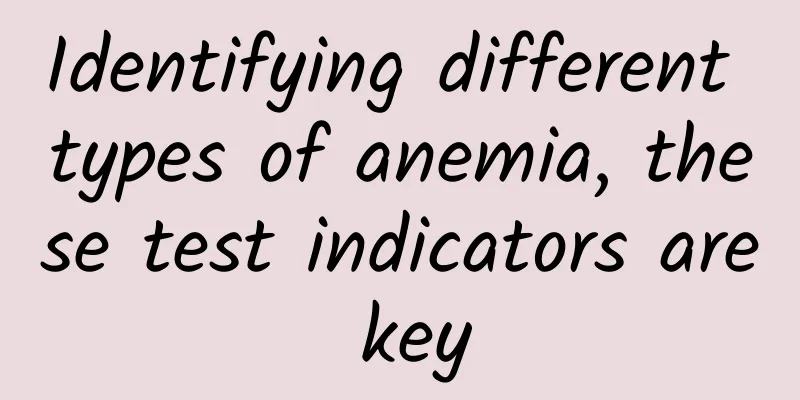Identifying different types of anemia, these test indicators are key

|
Author: Wang Xuejing, Chief Physician of Civil Aviation General Hospital Reviewer: Wang Lixiang, Chief Physician, Third Medical Center, PLA General Hospital The 10th Chairman of the Science Popularization Branch of the Chinese Medical Association Anemia is a common blood disease characterized by a hemoglobin concentration in the blood that is lower than the normal range, resulting in a decrease in oxygen transport capacity. Common causes of anemia include iron deficiency anemia, nutritional anemia (such as folic acid or vitamin B12 deficiency), aplastic anemia, and anemia associated with chronic diseases. Anemia-related detection indicators are helpful for etiology diagnosis and precise treatment. The following will introduce in detail several key detection indicators such as transferrin, soluble transferrin receptor, folic acid and vitamin B12, erythropoietin, and haptoglobin, and explore their application in anemia diagnosis. Transferrin is a protein responsible for transporting iron, similar to a transport vehicle that transports iron from storage sites to the bone marrow for the synthesis of hemoglobin. In certain specific circumstances, such as anemia, pregnancy, and childhood growth, the body's demand for iron increases, and the body needs to create more "transport vehicles" to improve iron utilization to ensure that iron is efficiently transported to where it is needed, so transferrin levels rise. However, transferrin is also known as a negative stress protein. Its level decreases under stress conditions such as trauma, shock, severe infection, or tumors, and it cannot accurately reflect the actual demand for iron in the body. In addition, the transferrin level in patients with nephrotic syndrome will also decrease in blood concentration due to the kidneys filtering more protein, and it cannot reflect the body's iron needs. Transferrin receptors are located on the surface of red blood cells and are responsible for bringing iron into the cells after binding to transferrin. Soluble transferrin receptors are the protein outside red blood cells that can fall off and enter the blood circulation, that is, soluble transferrin receptors. In iron deficiency anemia, the "transporter" transferrin increases, and the corresponding transferrin receptor level increases, so the concentration of soluble transferrin receptors also increases. In contrast, anemia caused by chronic diseases is usually not accompanied by iron deficiency. At this time, the level of soluble transferrin receptors remains normal. This feature helps to distinguish between the two different types of anemia. Figure 1 Original copyright image, no permission to reprint Folic acid and vitamin B12 also play an important role in the occurrence mechanism of anemia. As an important component of nucleic acid metabolism, folic acid is directly involved in the synthesis of DNA. When folic acid is deficient, the synthesis of the cell nucleus is inhibited. For rapidly dividing red blood cell precursor cells, this will cause the cells to fail to divide as expected, while hemoglobin is always synthesized, which manifests as an increase in cell volume but insufficient maturity, leading to megaloblastic anemia. Vitamin B12, as a coenzyme, promotes the absorption of folic acid by binding to the intrinsic factor secreted by gastric parietal cells. Megaloblastic anemia can be caused by a lack of vitamin B12 or the presence of intrinsic factor antibodies. Erythropoietin is a hormone produced by the kidneys. It mainly acts on the bone marrow to promote the production and division of red blood cells and maintain the metabolic balance of red blood cells. In advanced kidney disease, the production of erythropoietin in the kidneys decreases, causing renal anemia. For this type of anemia, simply supplementing hematopoietic raw materials such as iron and folic acid cannot effectively relieve the symptoms. It is necessary to supplement erythropoietin to stimulate hematopoiesis and improve the anemia condition. Haptoglobin is a protein produced by the liver. Its main function is to bind to free heme in the blood (mainly produced by the destruction of aging red blood cells), prevent heme from damaging tissues, and recycle it. In acute and chronic hemolysis, a large number of red blood cells are destroyed, and the released heme quickly consumes haptoglobin, resulting in a significant decrease in its serum level. Therefore, a decrease in serum haptoglobin levels can be used as one of the signs of acute and chronic hemolytic anemia. Figure 2 Original copyright image, no permission to reprint The presence of anti-intrinsic factor antibodies indicates that the body has developed an autoimmune response to intrinsic factor, interfering with the absorption of vitamin B12, which may lead to pernicious anemia. Although pernicious anemia is rare, a positive test result for anti-intrinsic factor antibodies still provides an important clue to the diagnosis. Because aplastic anemia involves comprehensive damage to the bone marrow's hematopoietic function, it often requires more in-depth examination methods such as bone marrow puncture to make a clear diagnosis. |
>>: How to treat hemophagocytic syndrome caused by Epstein-Barr virus infection?
Recommend
Can pregnant women eat wild vegetables?
Everyone is very familiar with ordinary hawthorn ...
Can black-bone chicken nourish the kidneys? How to eat black-bone chicken to nourish the kidneys
Black-bone chicken is tender and delicious, and c...
What is the paste on the yogurt cover? Why is the layer on the yogurt cover the most delicious?
Yogurt is made from fresh milk or skim milk, whic...
What are the signs of pregnancy scar?
Scars are not obvious signs of pregnancy. In the ...
Women must know: Vaginal bleeding is like this
In addition to normal menstrual bleeding, many pe...
How to have a perfect waist?
If there is anything that is the key to maintaini...
Is Mauritius a developed country? What are the specialties of Mauritius?
Mauritius is a volcanic island country surrounded...
What causes abdominal pain after miscarriage?
There is no doubt that abortion has a great impac...
Female breast massage techniques
Nowadays, due to various reasons such as environm...
How does a tiny virus with a diameter of less than 120 nanometers carry out its "T cell attack plan" in the human body?
On June 5, 1981, the U.S. Centers for Disease Con...
What common misunderstandings about mycoplasma infection should be avoided? Remember these nine measures to prevent respiratory infectious diseases in winter
Autumn and winter are the peak seasons for variou...
What are the causes of postpartum urine leakage?
Postpartum mothers may also experience urinary in...
You must know the effects and functions of red beans and coix seeds!
Red beans and coix seeds are both health foods th...
Which is better to choose between laying wooden floor or laying tiles in the living room? How is the labor cost of laying wooden floor calculated?
When it comes to floor decoration, tiles are the ...
What is the best way to treat amenorrhea?
Amenorrhea is a common symptom of gynecological d...









